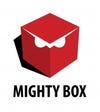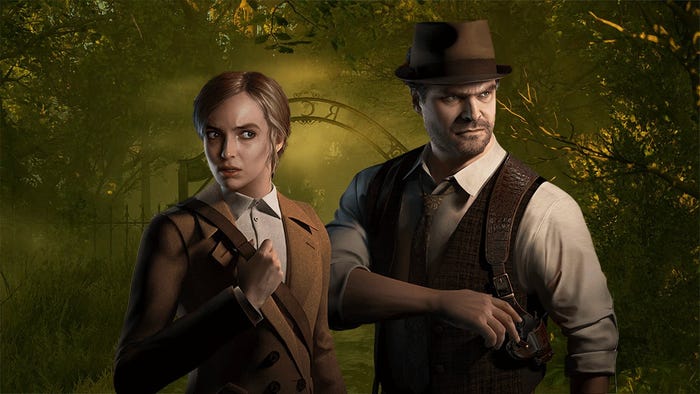An overview of the relationship between the Posthuman board game and Posthuman: Sanctuary (PC/Mac/Linux).

Gordon Calleja here, designer and writer at Mighty Box, a small indie game company from Malta. In April 2015 we successfully Kickstarted a post-apocalyptic survival board game called Posthuman and we're now in the process of adapting it into Posthuman: Sanctuary, a part roguelite, part interactive fiction digital game.
In this post I would like to give readers an overview of the relationship between the Posthuman board game and Posthuman: Sanctuary. In it I will give a high-level perspective of the process of adapting the board game to digital platforms. The focus here is on “adaptation”. By this I mean that rather than re-creating the board game in digital form, the goal of the digital incarnation would be to bring the board game to life utilizing the capabilities of a digital, algorithmic medium within the scope of our small team and modest budget.
 First of all it’s worth noting that the development of Sanctuary did not start after the board game’s development. From the very first days of creating the Posthuman universe, we always envisaged it expressed through a digital medium. I had been developing a board game system on the side prior to this conversation and we hit upon the idea to release a board game to introduce people to the Posthuman world. We underestimated the time investment this would take, and a big part of that was due to the massive success of the board game’s Kickstarter.
First of all it’s worth noting that the development of Sanctuary did not start after the board game’s development. From the very first days of creating the Posthuman universe, we always envisaged it expressed through a digital medium. I had been developing a board game system on the side prior to this conversation and we hit upon the idea to release a board game to introduce people to the Posthuman world. We underestimated the time investment this would take, and a big part of that was due to the massive success of the board game’s Kickstarter.
Work on the digital game’s development had already started, but due to the small size of our team, the majority of the team had to switch to working on the board game for a fair few months. The initial Posthuman: Sanctuary worked on a similar system as the board game but utilized much less of the board game metaphor. In many way we were trying to move away from it using concepts such as map tiles or dice in combat because we were worried we would alienate digital game players and, at the time, did not imagine we would have gathered such a strong and supportive following around the board game. At that juncture I felt it made sense to re-think the direction of Sanctuary. We had tested the board game extensively. It was a system people loved and there was a community we grew attached to. So why not fly the board game flag proudly and instead aim for drastically enhancing elements of the board game that are just too clunky, if not outright impossible to do through a board game – without involving a dungeon master, that is!
I pitched the idea to the rest of the Mighty Box team and there was unanimous agreement that this would be the best direction to follow. The leprechauns inside my belly did summersaults.
The major challenge was to decide on which parts of the Posthuman board game to bring to life most, and to what degree. To be more accurate, by “bring to life” I mean what to simulate and to what degree versus what to leave in the more abstracted state found in the board game.
 First of all, the basics: Sanctuary would be a single-player game. Multi-player would not work with Posthuman unless you’re doing pass and play and you can’t exactly base a game release on pass and play. Banking on online multiplayer with so many, short turns as the board game has would require large, simultaneously active communities – which we couldn’t bank on. Aside from this, a multi-player game would not allow me to push the one aspect of the board game I was most excited to develop: the story.
First of all, the basics: Sanctuary would be a single-player game. Multi-player would not work with Posthuman unless you’re doing pass and play and you can’t exactly base a game release on pass and play. Banking on online multiplayer with so many, short turns as the board game has would require large, simultaneously active communities – which we couldn’t bank on. Aside from this, a multi-player game would not allow me to push the one aspect of the board game I was most excited to develop: the story.
The main design goal of the board game was to create a vivid on-going story in the players’ minds that was partly shaped by sections of scripted (pre-written) narrative, but mostly from the actions taken in the world. And for these to be meaningful they needed to be different with every play-through. But there was a limit to how much of the Posthuman universe I could communicate without resorting to large chunks of scripted narrative. But in a digital game, this is much more doable. And this is the area of the board game we decided to invest in most, both in terms of intricacy of game-system and content.

Strongly tied to the narrative system are the followers. In a single-player game followers would need to take a stronger role. The sense of togetherness that players experience briefly in the board game would have to come from more than just a lump of stats and a graphic. For this reason I developed a psychology system for the followers to give them varied perspectives on your actions – and make you consider the narrative and combat decisions you take in relation to others.
Combat was a tough one. On the one hand I wanted Posthuman:Sanctuary to be more about story, but eliminating combat altogether would first of all be too different from the board game, and secondly, the whole back story is filled with strife and opposition. There are factions struggling against each other in a lawless world – avoiding combat situations would not make sense. And once combat is involved it needs to be fun. So I aimed for a simple yet tactical system that increases in complexity as characters develop and more skills, weapons and complex enemies are encountered.
Finally, with a single-player game in mind, the side-switching mechanic would need to go, at least as a game-play mechanic…
And thus, story, follower psychology and combat are the main (but by no means only) areas that Posthuman:Sanctuary expands on in terms of content and simulation.
More about all this in future posts!

Gordon
o.b.o. Mighty Box
Read more about:
BlogsAbout the Author(s)
You May Also Like









